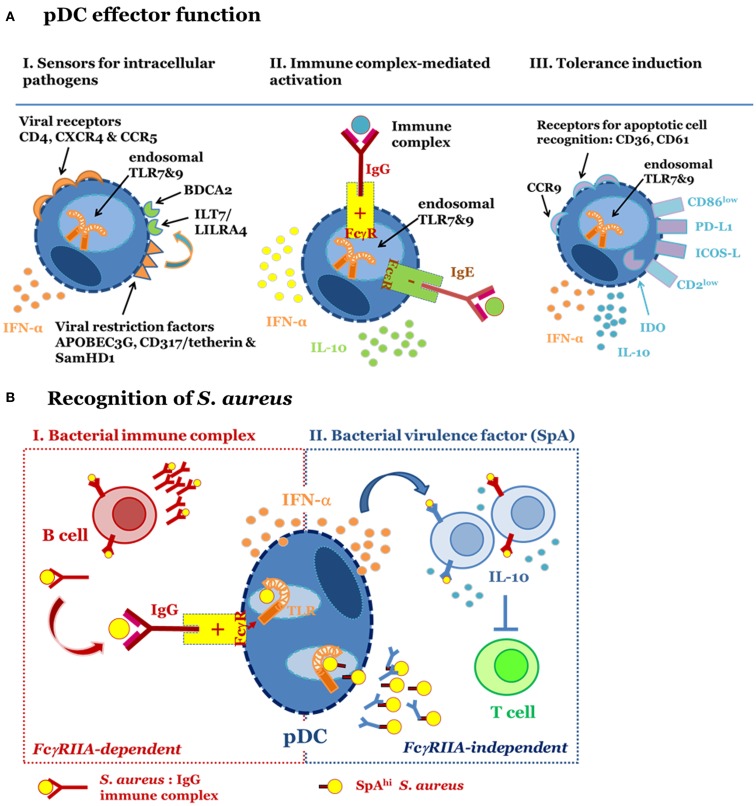Figure 1.
Plasmacytoid dendritic cells function in different immune contexts. (A) pDC fulfill different effector functions. I. Sensors for intracellular pathogens. pDC are target cells for viral infection because they express cell surface receptors utilized for virus entry, i.e., HIV permissive receptors CD4, CXCR4, and CCR5. Endosomal TLR7 and TLR9 mediate recognition of RNA and DNA viruses, respectively. IFN-I synthesis and viral restriction factors counteract viral infection and intracellular replication. Surface receptors such as ILT7 and BDCA2 regulate pDC function. II. Immune complex-mediated activation. pDC express FcγRIIA and FcεRI. These receptors are engaged by immune complexes consisting of IgG and bacteria, viruses or endogenous nucleic acids or IgE-bound allergens. Binding of FcγRIIA promotes access of IgG-complexed nucleic acids to endosomal TLR and enables pDC-derived IFN-α release. FcεRI ligation inhibits TLR9-induced IFN-α secretion and induces IL-10 production and Th2 polarization. III. Tolerance induction. pDC promote tolerance via induction of Treg. Tolerogenic function has been associated with high PDL-1 and low CD86 expression, release of IL-10, expression of CCR9, IDO, ICOS-L, and low CD2. Expression of CD36 and CD61 among other surface receptors enables apoptotic cell recognition. (B) S. aureus-induced pDC activation occurs in an FcγRIIA-dependent (I) and -independent (II) fashion. I (left): pDC are activated by bacterial immune complexes (IC) with anti-staphylococcal IgG. This activation requires prior generation of IgG and therefore forms part of a secondary immune response. IC-mediated engagement of the FcγRIIA promotes access of staphylococcal nucleic acids to endosomal TLR7/9, which induces secretion of IFN-α. II (right): S. aureus strains expressing high levels of protein A (SpA) stimulate pDC in the absence of IgG and IC formation. This virulence factor-dependent mechanism for pDC activation triggers release of IFN-α via activation of endosomal TLR7/9. Activated pDC support SpA-dependent B cell expansion and differentiation into IL-10 secreting plasmablasts. B cell-derived IL-10 production, a hallmark of regulatory B cell function, prevents T cell responses by inhibiting antigen presentation by dendritic cells and macrophages.

